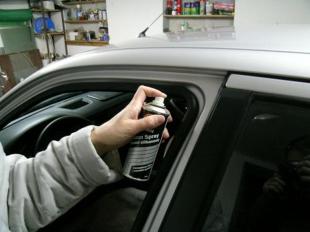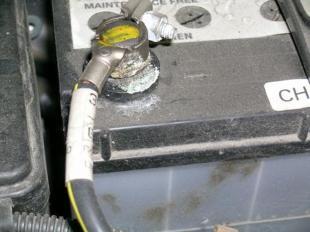
How to survive the winter
 Frost, snow, ice. In winter, drivers have to deal with all this. What should you pay attention to in order to drive safely and how to behave in a dangerous situation on the road?
Frost, snow, ice. In winter, drivers have to deal with all this. What should you pay attention to in order to drive safely and how to behave in a dangerous situation on the road?
Driving safety is determined by all the components that affect driving and communication between the car, driver and road users. 
The value of faulty wipers, washers, incorrectly adjusted headlights, a faulty steering system in winter increases many times over. And bald tires, faulty or worn out brake system - the first step to misfortune.
Another problem is shock absorbers, which drivers often almost completely underestimate. Meanwhile, shock absorbers are responsible not only for driving comfort, but also for how the wheel sticks to bumps. In addition, braking with a broken suspension is longer and it is difficult to maintain vehicle stability. The cost of checking to see if our suspension is worn out is small compared to the risk of an accident.
It is also worth making sure that the air pressure in the wheels on the right and left is the same, because differences can cause skidding.
Don't forget to clear your car of snow before your trip. There is no need to convince anyone to wash all the windows, but as you can see, it happens differently on the roads. And the first thing the driver should take care of is to see well what is happening on the road and be in sight himself. The heated windshields help a lot in this, thanks to which, already after a dozen or two seconds after starting the engine, we have a clean, steamed windshield and rear window. The same can be achieved by turning on the blower, but it takes more time.
Clean headlights are an element that increases the level of safety. Some vehicles have headlight washers. If there are none, be sure to wipe the surface of the lamps with a soft, non-scratching cloth. It is also recommended to clear the hood of snow and ice. If you leave it, after a few minutes the mask will heat up, and at the most inopportune moment an ice crust will fly on the windshield.
But safe driving on slippery surfaces depends not only on the good technical condition of the car. Much depends on the driving technique, as well as on the flair and foresight of the driver.
- It is enough to press the brake hard on a less tenacious road and the car is awry. Who among us has not heard the stories of the genre: “it was so slippery that the car itself drove off the road” or “I was turned around for no reason.” Meanwhile, nothing happens without a reason, says rally driver Marcin Turski.
– Often, even experienced drivers do not realize that on a slippery surface, too sharp steering movement or too much pressure on the brake pedal can lead to an accident. Sometimes we also meet drivers sitting at the wheel in furs and a thick hat. When driving smoothly everything is fine. But when the car skids, a scarf, a hat and other things like that can prevent us from quickly reacting, adds Tursky.
When it comes to shoes, there has to be a compromise between elegance and practicality. The foot should rest comfortably on the heel. High heels or a very thick sole can, for example, catch on the pedal, and besides, we don’t feel the pedals well and don’t know how to delicately control them.
It is no coincidence that most accidents occur after sudden changes in the weather - from good to worse - when drivers have not yet had time to remember or develop a reaction adapted to the slippery road. They have not yet realized that now any mistake can cost them dearly. On snow-covered surfaces, every maneuver when starting off, downshifting, changing direction, etc., can lead to a more or less dangerous loss of tire grip on the surface.
When driving in winter conditions, it is necessary to increase the distance to the car in front and check in the mirror what is happening with the car behind us. Before the transition, we slow down and stop, respectively, earlier. Allowance should be made for the fact that the driver behind us may have problems and we may have to "run away" from his car. You should not completely trust the ABS, which is also not effective on ice.
It is necessary to prepare for overcoming descents and ascents, because where all drivers either slow down or accelerate, the road is always slippery. We start going down the hill as slowly as possible - after all, we can only slow down very smoothly, and on the descent we will definitely have to accelerate. On the other hand, climbs we climb faster, but in order not to lose grip, we overcome them without adding gas.
Practice makes perfect
All these comments about winter driving will be useless if we don't put them to the test. Therefore, we suggest visiting some empty square, parking lot or playground. There, all our mistakes will be without consequences, and we will get rid of our fear.
Here are some examples of exercises:
“We drive around the circle faster and faster and try to feel when the car is moving off the chosen track.
- Accelerate the car and abruptly release the gas pedal, or switch to a lower gear and abruptly release the clutch. Then we try to control the car.
- We do slalom, adding gas when turning, when the car accuses us, we try to get out of a skid.
- We put an obstacle in our way - for example, a plastic cone or a paper box. When hitting a car that is not equipped with ABS, strongly press the brake pedal - the car skids and runs into an obstacle. Then we release the brake, accelerate and overtake. With ABS, we go around the obstacle without releasing the brake.
Piotr Vrublevsky, driving school
As a person walks slowly and carefully in winter, slows down in front of the stairs and avoids skidding, so does the driver. The most important thing is fantasy: we slow down in places where icing is possible, for example, on bridges, crossings, exits from the forest, and do not make sudden movements there. In any case, smooth driving and smooth steering movements are the key to safe winter survival. It is also worth practicing driving on slippery surfaces. Of course, it is best under the supervision of an instructor, but the effect is also achieved with self-study in an empty square or parking lot. We must also pay attention to whether our actions pose a threat to the safety of others in the vicinity.
